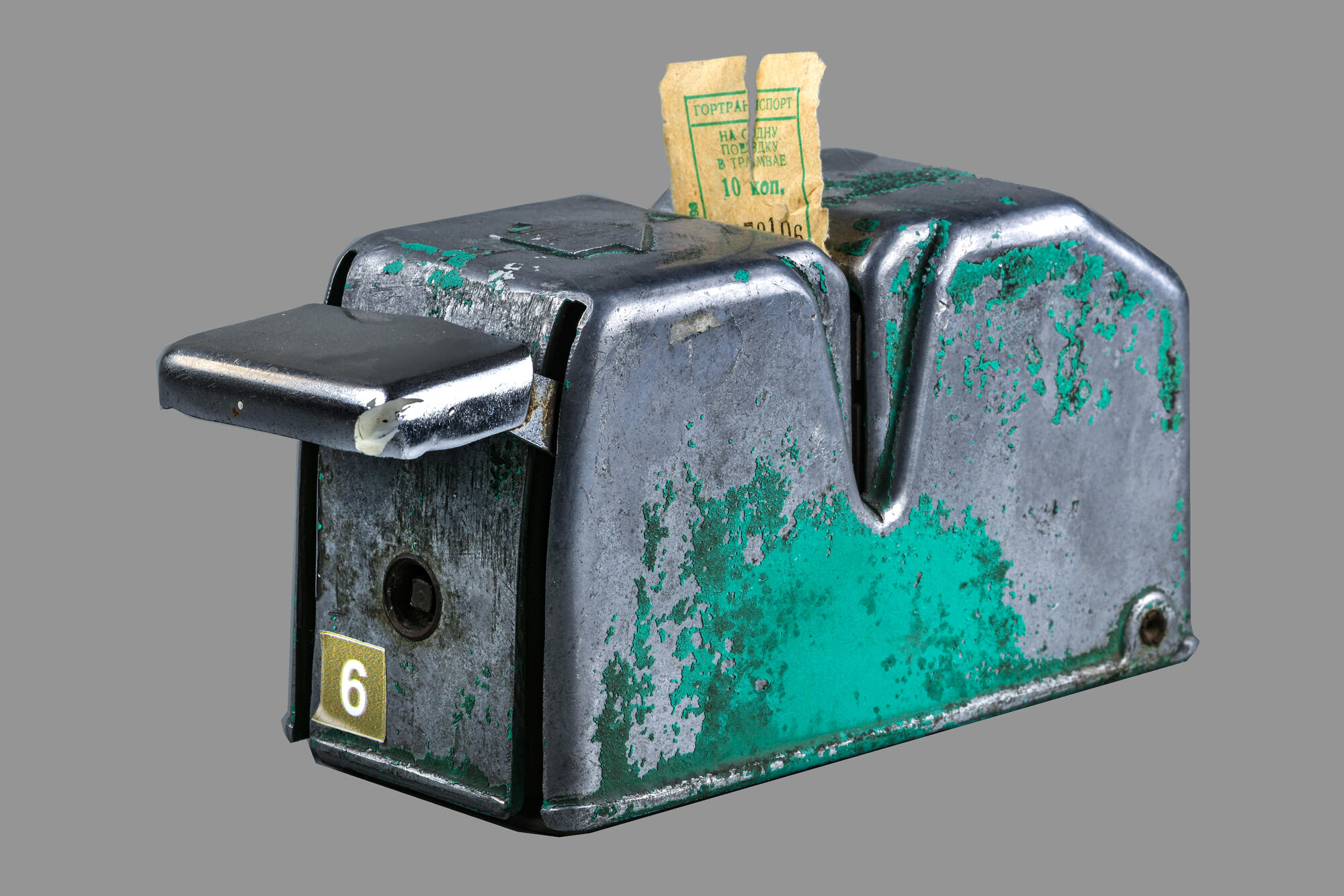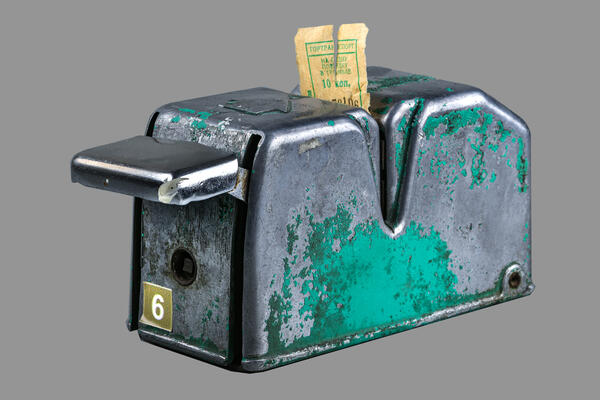The device was designed for stamping coupons (tickets) on public transport. In the 1970’s, one of the most convenient designs for punching tickets was developed. The ticket punches at that time either pierced or stamped out predetermined symbols. The process of piercing was called composting or stamping of coupons. Every passenger was aware of how it worked. You needed to put the coupon into the slot between the two arrows, then press the nickel lever. A code made up of the holes punched out of the ticket would then appear on the ‘punched’ ticket in a certain pattern. The ticket-punch had a fairly large set of possible pattern combinations.
When the ticket-punch was being repaired, the worker would open the device with a key and use the lever to change the pattern of spikes. A special set of metal spikes or punches actually punched out the holes. In order for the desired combination of holes to appear on the ticket, it was necessary to open the special cover and take out the unnecessary spikes. After this the cover was replaced and the ticket-punch was ready to keep working. The extra spikes could be stored in the ticket-punch itself and used to change the combinations. These ticket-punches were installed in Orsk trams.
In the post-war years, the city was actively expanded and redeveloped. The large expanse, or even sprawl of Orsk required the development of new transport links. A significant event for Orsk residents was the opening of the tram system on 5 December 1948. At the start, only six cars ran along the Sotsgorod to Nikel Station line. The route was 7.6 kilometers in length. In 1954, the trams started to cross the Ural river into the Old town, using a wooden bridge. On 5 November 1961, after an iron bridge across the Ural river and a large dam were completed, a new tram line was opened linking the European and Asian parts of the city. There were large-scale industrial enterprises in the newer part of time, and so it was necessary to link the two halves of the town with an accessible form of transport.
This exhibition also contains a conductor’s bag from 1967, as well as tickets from that year. The Orsk Tram system was awarded the ‘Badge of Honor’ in 1971 for its successful service of public transport to the city’s residents. In 1985, a new tram line was built in the housing development for trailer builders (OZTP), 13.3 kilometers in length with an independent control room. At this time the tram route was 78 kilometers in length.
By 1990, 176 different rolling stock units were operational. The price of a tram ticket (three kopeks) remained stable for a long time - from the 1960’s until the 1980’s.
In the 1980’s, ticket-punches appeared on trams and season tickets could be bought from the driver or special kiosks at tram stops.
This exhibition also contains a conductor’s bag from 1967, as well as tickets from that year. The Orsk Tram system was awarded the ‘Badge of Honor’ in 1971 for its successful service of public transport to the city’s residents. In 1985, a new tram line was built in the housing development for trailer builders (OZTP), 13.3 kilometers in length with an independent control room. At this time the tram route was 78 kilometers in length.
By 1990, 176 different rolling stock units were operational. The price of a tram ticket (three kopeks) remained stable for a long time - from the 1960’s until the 1980’s.
In the 1980’s, ticket-punches appeared on trams and season tickets could be bought from the driver or special kiosks at tram stops.


